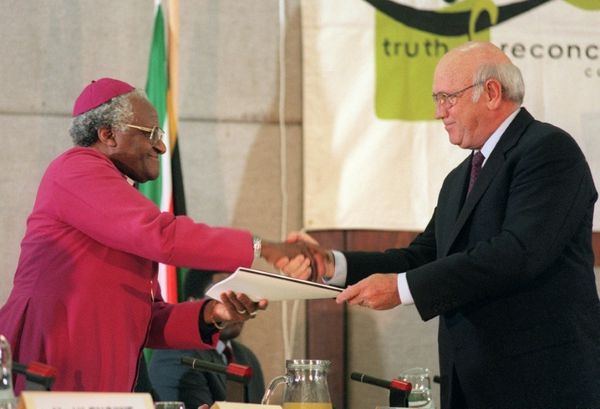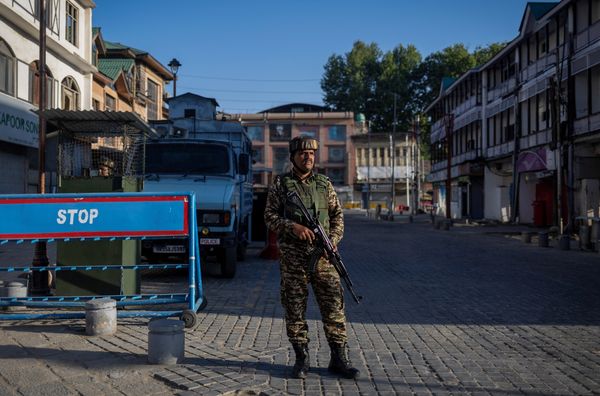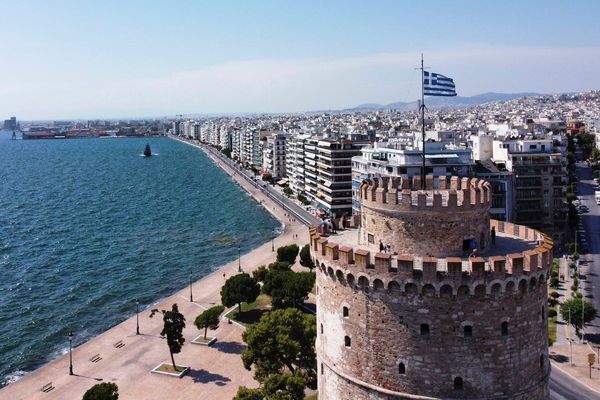
Lawrence Lessig has a message for America: Donald Trump’s assault on democracy in 2020, with his stolen-election lie and refusal to concede the White House, may have been shocking, but wait till you see what’s coming next.
“We are in a profoundly dangerous moment,” the Harvard law professor says. “This is a catastrophic year, and the odds are not in our favor.”
Such a blunt warning carries the gravitas of its source. Lessig is a leading thinker on how public institutions can be corrupted, and has probed deeply into vulnerabilities that leave US democracy undefended against authoritarian attack.
Lessig has teamed up with Matthew Seligman of the constitutional law center at Stanford. Their new book, How to Steal a Presidential Election, asks whether a second Trump attempt to subvert democracy could succeed. Their answer makes for uncomfortable reading.
“We are convinced,” they write, “that an informed and intelligent effort to undermine the results of a close, free and fair election could work in America – if the rules governing our presidential elections are not changed.”
It is a sign of troubled times that prominent scholars are wargaming the next election. A country that has long prided itself as an exemplar of constitutional democracy finds itself under surgical lights.
Nor is this Lessig’s first such thought experiment. Four years ago, months before Trump launched his stolen-election conspiracy, Lessig and Seligman devised a class at Harvard law school: Wargaming 2020. They looked at whether it would be possible to hack the presidential election and send the losing candidate to the White House. Their conclusion was that American democracy had dodged a bullet.
“We discovered that Trump didn’t really understand what he could have done,” Lessig says. “There were obvious moves he and his team could have made, but they didn’t take them.”
The insurrection on 6 January 2021 was tragic in its loss of life, but as a method of overturning the election it was the “dumbest thing they could have possibly done. No court would ever allow the election to be decided by force of bayonets.”
Having repeated the wargaming exercise for the new book, Lessig is far less confident that another assault on democracy would end so positively. With the former president almost certain to secure the Republican nomination, having won in Iowa and New Hampshire, Lessig has no doubt about how far Trump is prepared to go.
“We’ve seen that he’s willing to do much, more more than we expected back in 2020,” he says.
Another reason for people to be “very anxious” is that Trump and his inner circle have had four years to conduct their own wargames and are likely to be far more sophisticated: “Trump didn’t understand how to undo the structures of government. Now he’s well-trained, he knows exactly what he needs to do.”
For their 2024 wargame, Lessig and Seligman assume the November election will be nail-bitingly close, both nationally and in at least one battleground state. That is not an outlandish precondition – you only have to think about the 537 votes that gifted Florida and the presidency to George W Bush in 2000.
Given a close election, there are factors that could help stave off disaster. With the vice-presidency in the hands of Kamala Harris, there is no chance of Trump or his supporters unleashing the kind of pressure to which they subjected Mike Pence in 2020, trying to get him to block certification of Joe Biden’s victory.
In the wake of January 6, Congress also moved to close several loopholes by clarifying some of the most ambiguous wording of the 1887 Electoral Count Act. The Electoral Count Reform and Presidential Transition Improvement Act makes it harder for Congress to object to the counting of votes under the electoral college, and gives the courts a greater role in adjudicating the proper slate of electors to be returned from individual states should disputes arise.
But in the Lessig-Seligman analysis, inevitable congressional compromises have left some loopholes in place, opening up opportunities for an unscrupulous, now battle-hardened candidate.
Three scenarios stand out. The first relates to so-called “faithless electors”: delegates chosen by parties to represent the winning candidate in each state under the arcane terms of the electoral college who decide to go against their pledge and back the loser.
During Trump’s first presidential run in 2016, 10 electors switched their votes. The ruse was a creative, albeit vain attempt to stave off a Trump presidency.
Lessig argued on behalf of the 2016 faithless electors before the US supreme court, in a case known as Chiafolo v Washington. The court ruled against the faithless electors, ordering that states have the right to compel them to back the winners of the popular vote.
The authors’ concern is that the supreme court left it up to each state to decide whether or not to take up that power. Several states have yet to spell out in law that electors must abide by their pledge to vote for the victor. That leaves the door open to electors coming under massive, even violent pressure from Trump’s army of Make America Great Again warriors.
“Imagine an elector had Maga Republicans surrounding their house carrying torches and demanding they vote for Donald Trump. Who knows what the electors would do in those circumstances,” Lessig says.
The second scenario involves what Lessig and Seligman call a “rogue governor”: the governor of a state who decides to flip the results of the presidential election. This route poses the greatest long-term threat of US democracy imploding, Lessig believes.
Paradoxically, post-January 6 reforms in the Electoral Count Reform and Presidential Transition Improvement Act heightened the danger by increasing the powers of governors to certify slates of electors sent to Congress. Both houses of Congress can vote to overrule a rogue governor, and count the correct slate representing the winner of the popular vote, but only if the House and Senate agree.
Given a divided Congress, a rogue governor and rogue House working together could steal the state’s electoral votes, and with it potentially the presidency.
The risk of this scenario in this election cycle is minimal, Lessig concedes. Many of the highly sensitive battleground states – Arizona, Michigan, Pennsylvania, Wisconsin – have Democratic governors.
That leaves Georgia, which Biden won by just 11,779 votes. It has a Republican governor, Brian Kemp, but he resisted Trump’s efforts to overturn the result in 2020 and so is arguably less likely to go rogue this year.

The third wargaming scenario is the one that really keeps Lessig up at night: what if an entire state legislature decided to go rogue?
Again, the idea is not fanciful. Several legislatures in the most hotly contested states have Republican majorities firmly under Trump’s sway – Arizona, Georgia and Wisconsin, to name just three – and conspiracy theories about rampant electoral fraud continue to circulate within them.
Lessig worries that the supreme court ruling in Chiafolo, by giving state legislatures the power to tell electors how to cast their electoral votes, heightens the risk of a Maga-dominated legislature going rogue. He envisages state lawmakers claiming massive fraud in a close race and using that to justify switching its result to Trump.
“That’s a kind of opened hole that is going to be very hard to close in time,” he says.
•••
The Harvard professor has emerged from this journey into the dark arts of election subversion in a bleak mood. The book finishes with a raft of proposed changes to federal and state laws that the authors argue would close the loopholes they uncovered in their travels. Will those changes happen in time to prevent a second Trump blitzkrieg?
“I’m not optimistic,” Lessig says. “I’m not optimistic that Congress will be able to do anything in time, so the most we can hope for is that the infrastructure resists as it did last time.”
When he was researching the book, Lessig says he had the voice of his 13-year-old daughter ringing in his head: “Just chill,” as she would say. But in the event of an extremely close result, he feels he can’t just chill.
He stresses that none of this is partisan. He began life as a Republican and had the distinction in 1980, aged 19, of being the youngest delegate from Pennsylvania to Ronald Reagan’s nominating convention.
“Neither of us have anything against the conservative movement in the United States, as expressed in the traditional Republican party,” he says.
But he looks at how the party has become “disengaged from the basic premise of democratic politics – if you win, you win, if you lose, you go home”. And he sees that the number of Americans who still believe the 2020 election was stolen, against all evidence, remains steady. That scares him.
“Many Trump supporters have the sense that anything is justified, and that’s terrifying,” he says. “Trump is denying every single core democratic norm, and yet his support continues to grow. That too is astonishing and terrifying.”
How to Steal a Presidential Election is published in the US by Yale University Press







